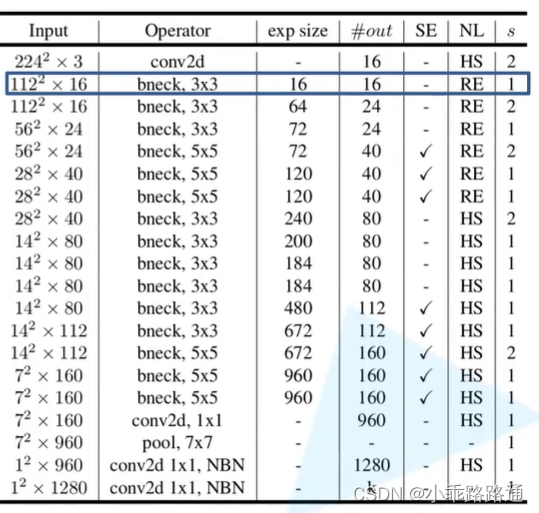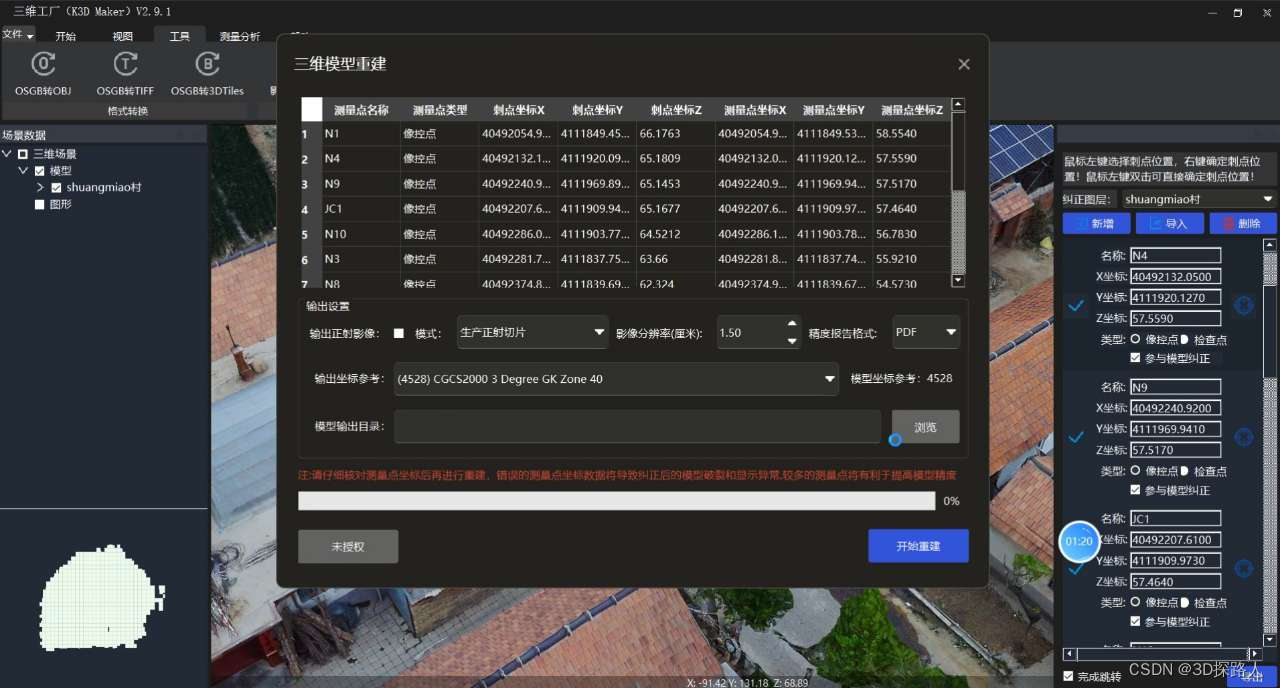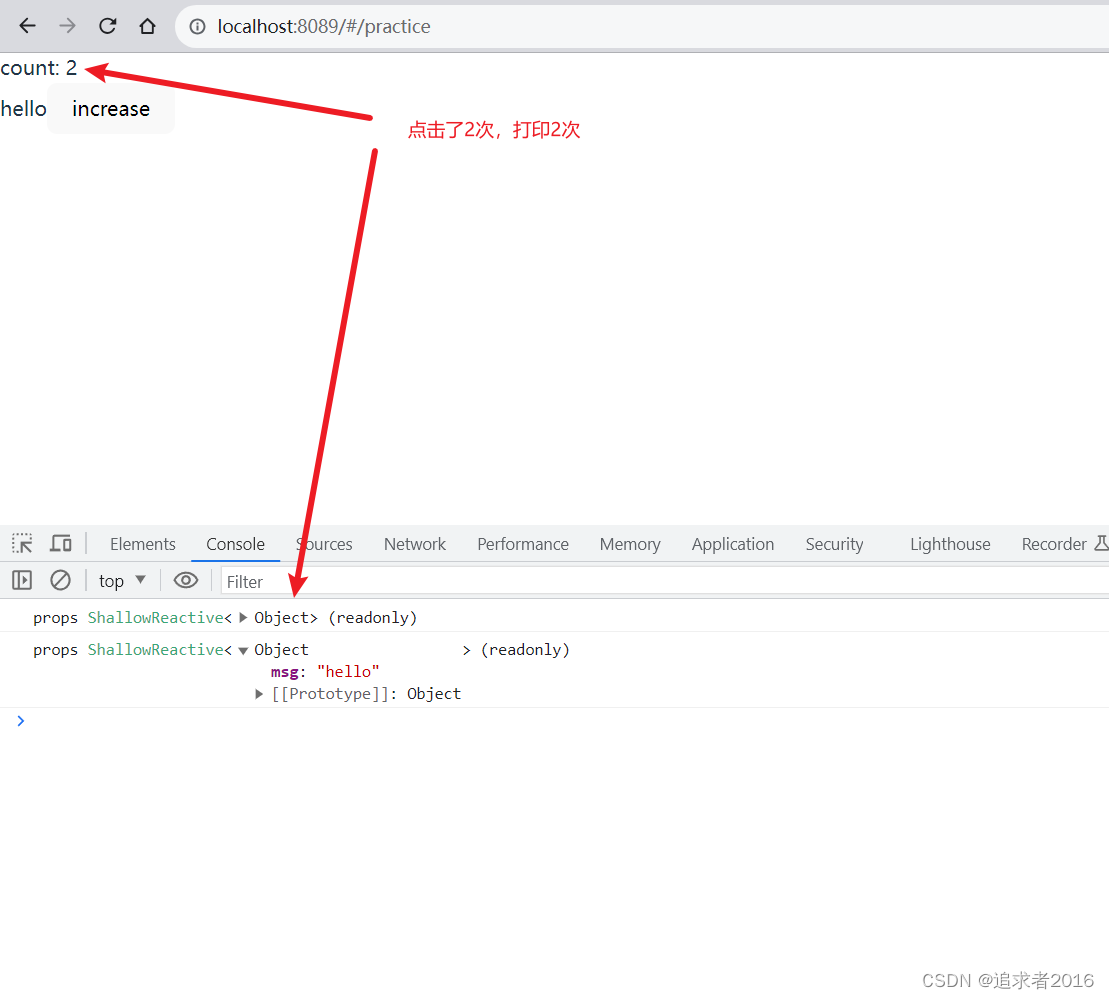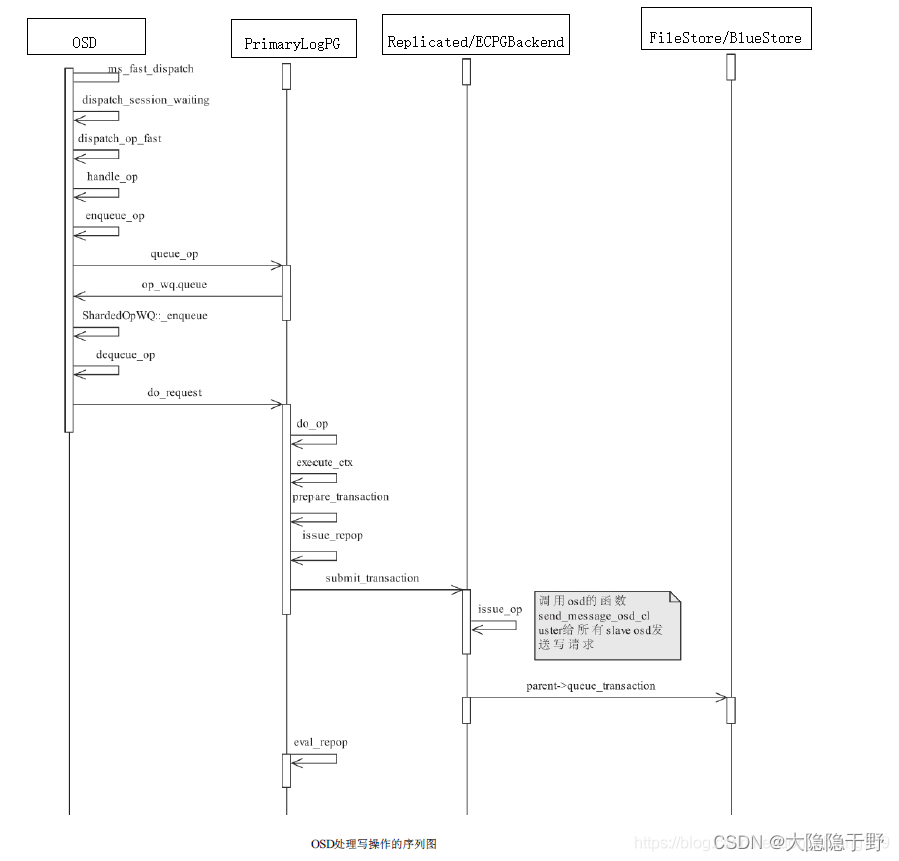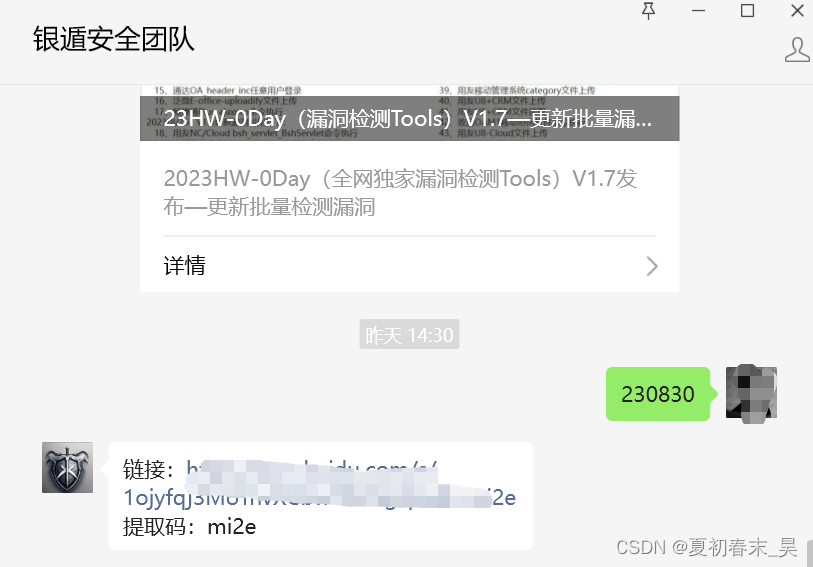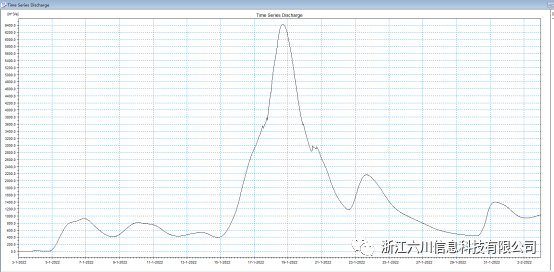前言
上一章节我们用我们开发板在UDP组播模式下进行数据回环测试,本章我们用开发板去主动ping主机IP地址来检测与该主机之间网络的连通性。
什么是PING?
PING是一种命令, 是用来探测主机到主机之间是否可通信,如果不能ping到某台主机,表明不能和这台主机建立连接。ping 使用的是ICMP协议,它发送icmp回送请求消息给目的主机。ICMP协议规定:目的主机必须返回ICMP回送应答消息给源主机。如果源主机在一定时间内收到应答,则认为主机可达。可以理解为ping命令是ICMP的一种形式,而ICMP属于网络层协议,因而ping也工作在网络层。
连接方式
- 开发板直连主机
- 开发板和主机都接在路由器LAN口
PING测试
我们的W5100S以太网芯片,既可以通过一个socket端口开启IPRAW模式自己组包(ICMP报文)对目标IP进行ping测试,从而在软件上实现ping功能,也可以通过配置SOCKET-less命令相关寄存器,通过SOCKET-less命令直接在硬件上实现ping功能,省去了在软件上组包、解析数据包的烦恼,而且不占用socket端口,非常方便和易于实现。下面我们通过这两种方式分别进行ping测试:
1. 相关代码
1. 通过IPRAW模式实现(软件)
我们打开库文件PING文件夹里的ping.c文件,我们主要用到这几个函数:ping_auto()、ping_request()、ping_reply()、do_ping()等,ping_request()和ping_reply()主要是ping请求的组包和收到ping回复的数据包解析,用到的数据转换和处理大家自行查看,这里我们主要看下ping_auto()函数,它通过在一个循环里构建一个状态机来对socket状态进行轮询,做出对应处理,如果端口关闭状态,就设置对应端口协议为ICMP协议,然后以IPRAW模式打开;进入IPRAW模式后,发送ping请求,然后判断是否收到或超时,收到就进行解析,之后跳出,超时则跳出,当请求数和回复数相等且为4次时结束大循环,然后将它再封装成do_ping()方便直接调用,如下所示:
/* Ping the Internet automatically. */
void ping_auto(uint8_t sn, uint8_t *addr)
{
int32_t len = 0;
uint8_t cnt = 0;
uint8_t i;
for (i = 0; i < 10; i++)
{
if (req == rep && req == 4)
break;
switch (getSn_SR(sn))
{
case SOCK_IPRAW:
ping_request(sn, addr);
req++;
while (1)
{
if ((len = getSn_RX_RSR(sn)) > 0)
{
ping_reply(sn, addr, len);
sleep_ms(50);
rep++;
break;
}
else if (cnt > 200)
{
printf("Request Time out.\r\n");
cnt = 0;
break;
}
else
{
cnt++;
sleep_ms(50);
}
}
break;
case SOCK_CLOSED:
close(sn);
setSn_PROTO(sn, IPPROTO_ICMP);
if (socket(sn, Sn_MR_IPRAW, 3000, 0) != 0)
{
}
while (getSn_SR(sn) != SOCK_IPRAW)
;
sleep_ms(2000);
default:
break;
}
#ifdef PING_DEBUG
if (rep != 0)
{
printf(" Ping Request = %d, PING_Reply = %d\r\n", req, rep);
if (rep == req)
printf(" PING SUCCESS\r\n ");
else
printf(" REPLY_ERROR\r\n ");
}
#endif
// if(rep==4)break;
}
}
/* ping response. */
uint8_t ping_request(uint8_t sn, uint8_t *addr)
{
uint16_t i;
int32_t t;
ping_reply_received = 0;
PingRequest.Type = PING_REQUEST; /*Ping-Request*/
PingRequest.Code = CODE_ZERO; /*总是 '0'*/
PingRequest.ID = htons(RandomID++); /*设置ping响应ID为随机的整型变量*/
PingRequest.SeqNum = htons(RandomSeqNum++);
for (i = 0; i < BUF_LEN; i++)
{
PingRequest.Data[i] = (i) % 8;
}
PingRequest.CheckSum = 0;
PingRequest.CheckSum = htons(checksum((uint8_t *)&PingRequest, sizeof(PingRequest)));
t = sendto(sn, (uint8_t *)&PingRequest, sizeof(PingRequest), addr, 3000);
if (t == 0)
{
printf("\r\n Fail to send ping-reply packet r\n");
}
else
{
printf(" 正在 Ping: %d.%d.%d.%d \r\n", (addr[0]), (addr[1]), (addr[2]), (addr[3]));
}
return 0;
}
/* Resolving ping reply. */
uint8_t ping_reply(uint8_t s, uint8_t *addr, uint16_t rlen)
{
uint16_t tmp_checksum;
uint16_t len;
uint16_t i;
uint8_t data_buf[128];
uint16_t port = 3000;
PINGMSGR PingReply;
len = recvfrom(s, (uint8_t *)data_buf, rlen, addr, &port); /*从目的端接收数据*/
if (data_buf[0] == PING_REPLY)
{
PingReply.Type = data_buf[0];
PingReply.Code = data_buf[1];
PingReply.CheckSum = (data_buf[3] << 8) + data_buf[2];
PingReply.ID = (data_buf[5] << 8) + data_buf[4];
PingReply.SeqNum = (data_buf[7] << 8) + data_buf[6];
for (i = 0; i < len - 8; i++)
{
PingReply.Data[i] = data_buf[8 + i];
}
tmp_checksum = ~checksum(data_buf, len); /*检查ping回复的次数*/
if (tmp_checksum != 0xffff)
printf("tmp_checksum = %x\r\n", tmp_checksum);
else
{
printf(" 来自 %d.%d.%d.%d 的回复: ID=%x 字节=%d \r\n",
(addr[0]), (addr[1]), (addr[2]), (addr[3]), htons(PingReply.ID), (rlen + 6));
ping_reply_received = 1; /*当退出ping回复循环时,设置ping回复标志为1*/
}
}
else if (data_buf[0] == PING_REQUEST)
{
PingReply.Code = data_buf[1];
PingReply.Type = data_buf[2];
PingReply.CheckSum = (data_buf[3] << 8) + data_buf[2];
PingReply.ID = (data_buf[5] << 8) + data_buf[4];
PingReply.SeqNum = (data_buf[7] << 8) + data_buf[6];
for (i = 0; i < len - 8; i++)
{
PingReply.Data[i] = data_buf[8 + i];
}
tmp_checksum = PingReply.CheckSum; /*检查ping回复次数*/
PingReply.CheckSum = 0;
if (tmp_checksum != PingReply.CheckSum)
{
printf(" \n CheckSum is in correct %x shold be %x \n", (tmp_checksum), htons(PingReply.CheckSum));
}
else
{
}
printf(" Request from %d.%d.%d.%d ID:%x SeqNum:%x :data size %d bytes\r\n",
(addr[0]), (addr[1]), (addr[2]), (addr[3]), (PingReply.ID), (PingReply.SeqNum), (rlen + 6));
ping_reply_received = 1; /* 当退出ping回复循环时,设置ping回复标志为1 */
}
else
{
printf(" Unkonwn msg. \n");
}
return 0;
}
void do_ping(uint8_t sn, uint8_t *ip)
{
if (req < 4)
{
printf("------------------PING test start-----------------------\r\n");
sleep_ms(1000);
ping_auto(sn, ip);
}
else if (req == 4)
close(sn);
}2. 通过SOCKET-less命令实现(硬件)
我们找到SLping()函数,它需要我们传入两个参数:ping测试远程IP地址和ping测试次数,然后我们配置相应的SOCKET-less重传时间、重传次数、远程IP地址、中断屏蔽寄存器,然后根据传入的参数值设置ping次数,传入的值为0则将其设置为数据类型的最大值;接着在for循环里面,设置ping序列号和ID,并开启ping请求发送命令,用Switch状态机轮询中断寄存器,根据中断置位情况进行相应处理,这里分为超时和收到ping应答两个状态(情况),最后统计请求和应答成功、失败数后,进入阻塞;如下所示:
/**
* socket-less ping
* remote_ip: ping ip address
* ping_count: ping times, if its 0,always request to the max :65535 times.
*/
void SLping(uint8_t *remote_ip, uint16_t ping_count)
{
uint16_t i;
static uint16_t succ_count = 0;
setSLRTR(5000); // 5000 * 100us = 500ms
setSLRCR(2);
setSLPIPR(remote_ip);
setSLIMR(0x05);
if (ping_count == 0)
ping_count = 65535;
for (i = 0; i < ping_count; i++)
{
printf("Ping the %d.%d.%d.%d \r\n", remote_ip[0], remote_ip[1], remote_ip[2], remote_ip[3]);
setPINGSEQR(RandomSeqNum);
setPINGIDR(RandomID);
setSLCR(0X01); // ping
sleep_ms(2000); // wait
switch (getSLIR() & 0x07)
{
case PING_INT:
printf("Reply from %d.%d.%d.%d : ID: %x SeqNum: %x.\r\n", remote_ip[0], remote_ip[1], remote_ip[2], remote_ip[3], getPINGIDR(), getPINGSEQR());
succ_count++;
break;
case TIMEOUT_INT:
printf("Request timeout\r\n");
default:
break;
}
RandomID++;
RandomSeqNum++;
}
printf("Ping request: %d, Succ: %d, Fail: %d.\r\n", ping_count, succ_count, (ping_count - succ_count));
while (1)
;
}
主程序只需要初始化相关对应信息后,传入主函数循环调用即可,这里我们要进行ping测试的主机IP为我们开发板同一网段的电脑IP,如下所示:
#define SOCKET_ID 0
#define ETHERNET_BUF_MAX_SIZE (1024 * 2)
void network_init(void);
wiz_NetInfo net_info = {
.mac = {0x00, 0x08, 0xdc, 0x16, 0xed, 0x2e},
.ip = {192, 168, 1, 11},
.sn = {255, 255, 255, 0},
.gw = {192, 168, 1, 1},
.dns = {8, 8, 8, 8},
.dhcp = NETINFO_STATIC};
wiz_NetInfo get_info;
static uint8_t ethernet_buf[ETHERNET_BUF_MAX_SIZE] = {0,};
static uint8_t remote_ip[4] = {192, 168, 1, 2};
int main()
{
stdio_init_all();
sleep_ms(2000);
network_init();
while(true)
{
do_ping(SOCKET_ID, remote_ip);
// SLping(remote_ip, 4);
sleep_ms(500);
}
}
void network_init(void)
{
uint8_t temp;
wizchip_initialize();
printf("W5100s udp client example.\r\n");
sleep_ms(2000);
wizchip_setnetinfo(&net_info);
print_network_information(get_info);
sleep_ms(2000);
}2. 测试现象
编译烧录后,打开串行监视器,打开wireshark输入过滤条件<icmp>然后开启监听,可以看到在串口打印的配置信息,以及ping测试情况,wireshark的抓包情况,这里是通过软件实现的测试,硬件实现大家自行尝试;测试结果如下图所示:
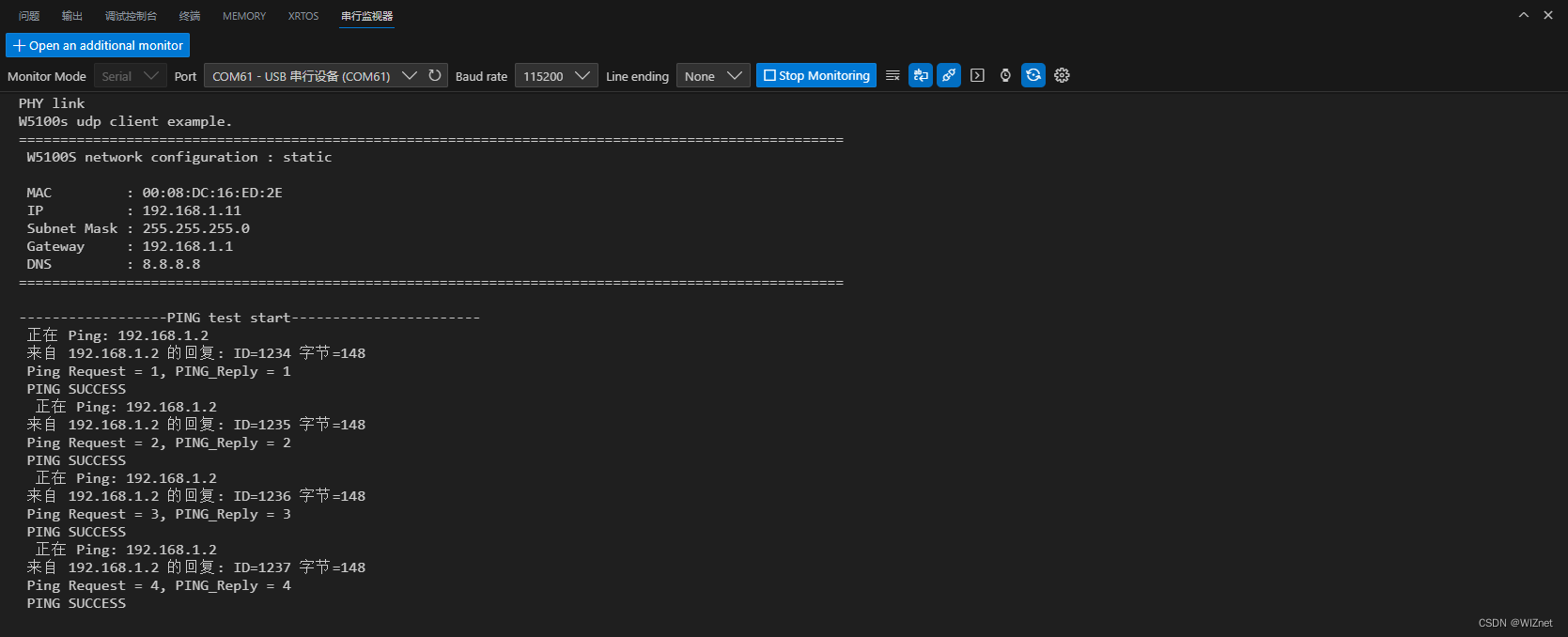
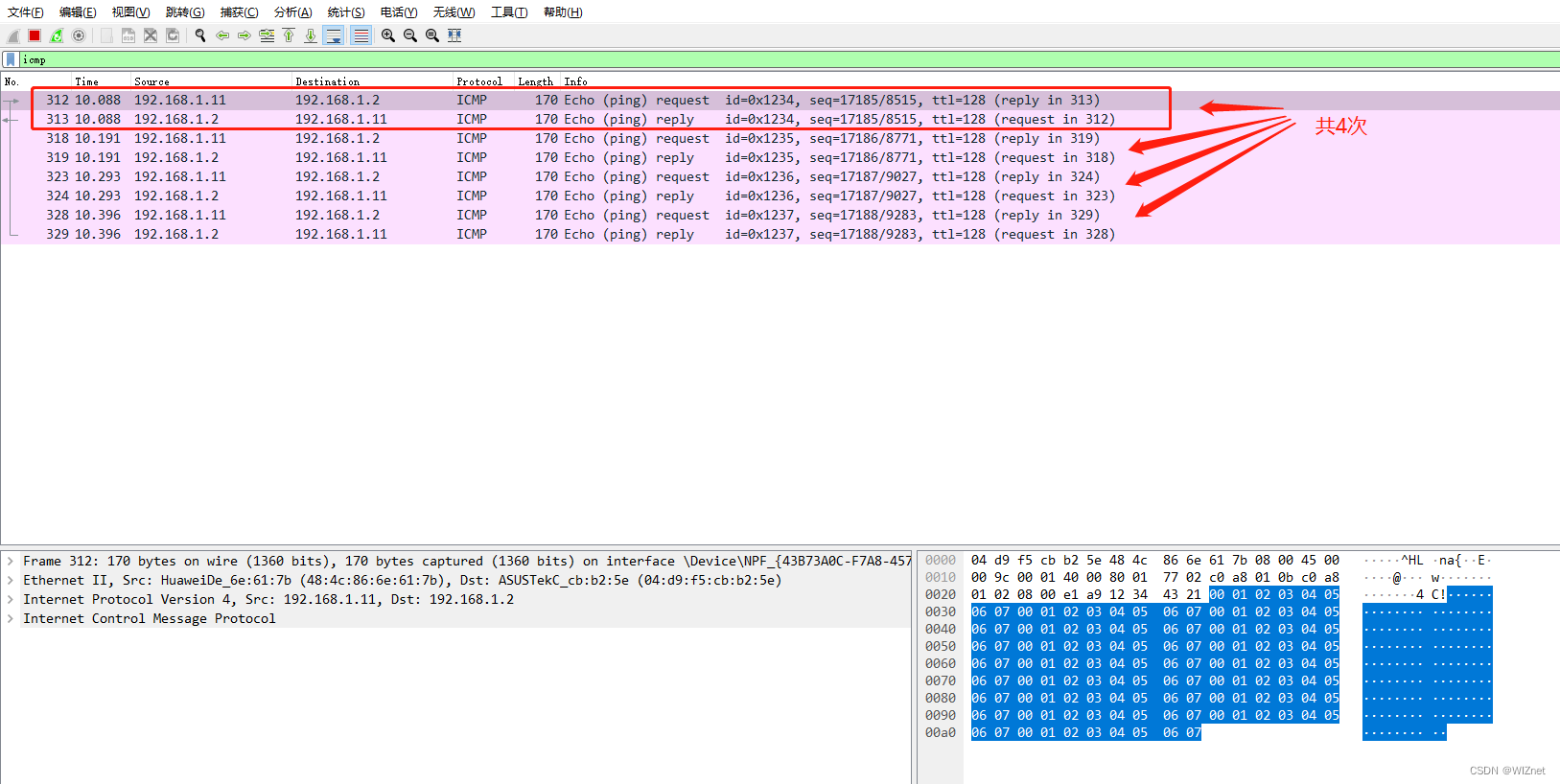 相关链接
相关链接
本章例程链接![]() https://gitee.com/wiznet-hk/w5100s-evb-pico-routine.git
https://gitee.com/wiznet-hk/w5100s-evb-pico-routine.git
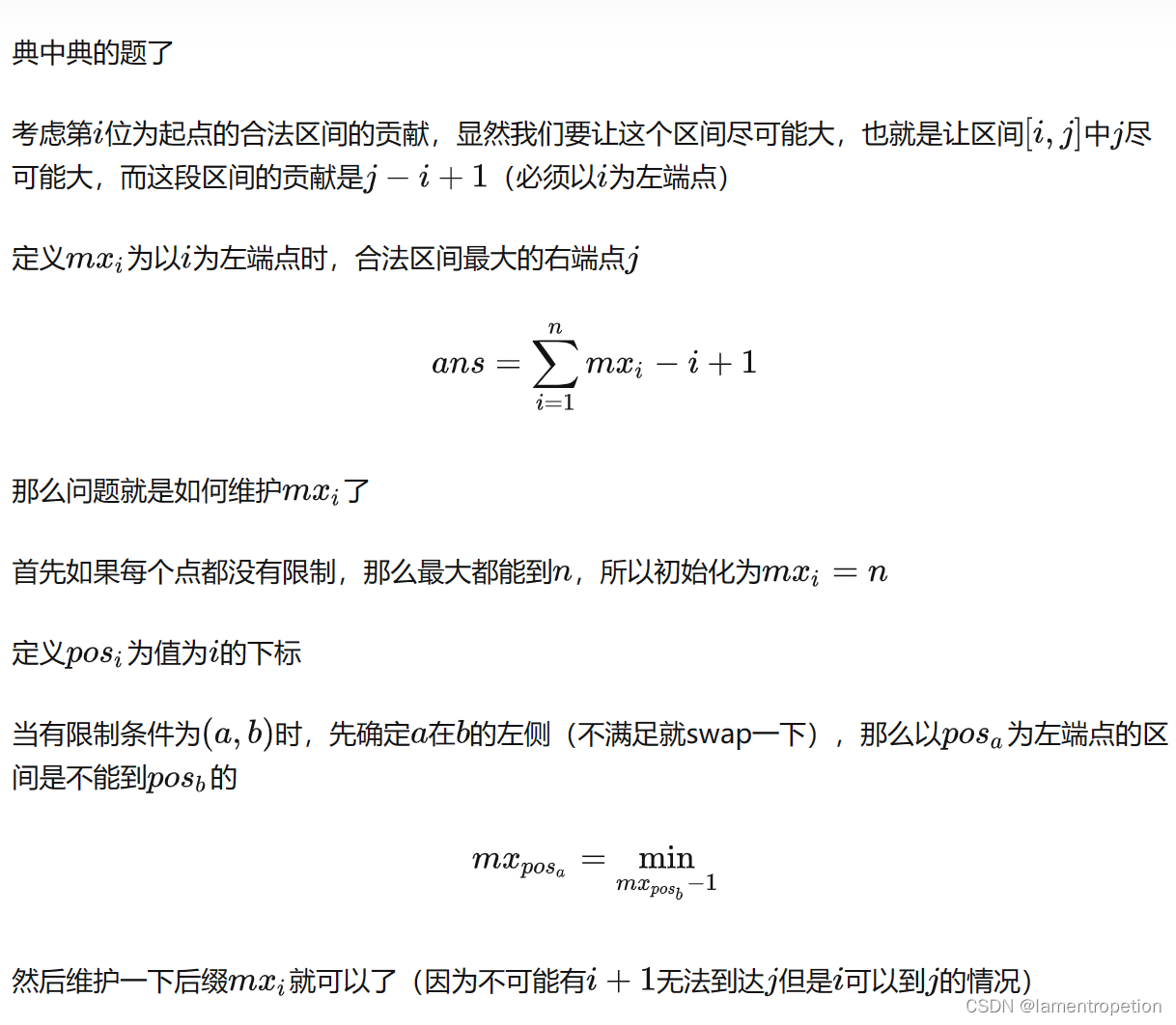





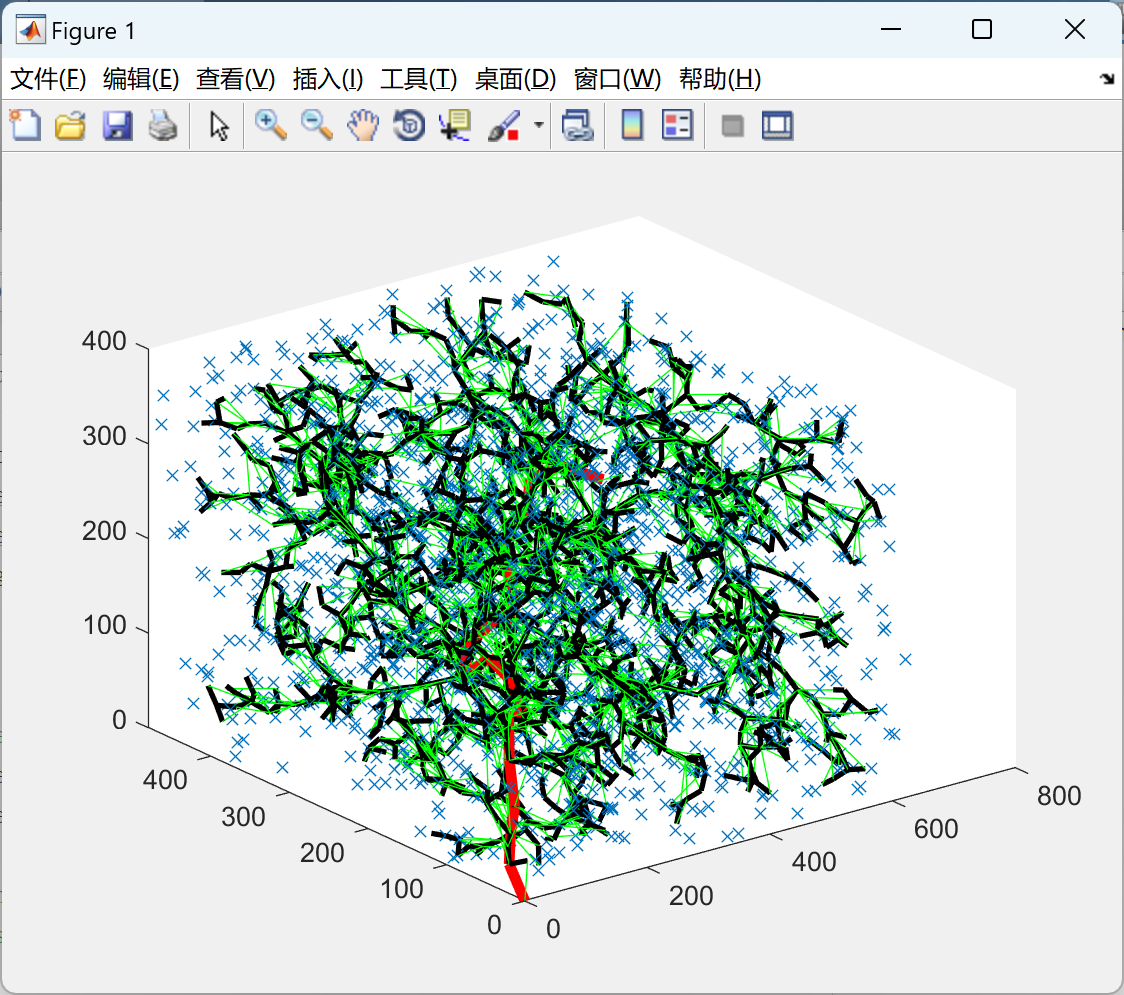
![java八股文面试[多线程]——阻塞队列](https://img-blog.csdnimg.cn/a57feb4a2a1141ea880de86953a2282f.png)
